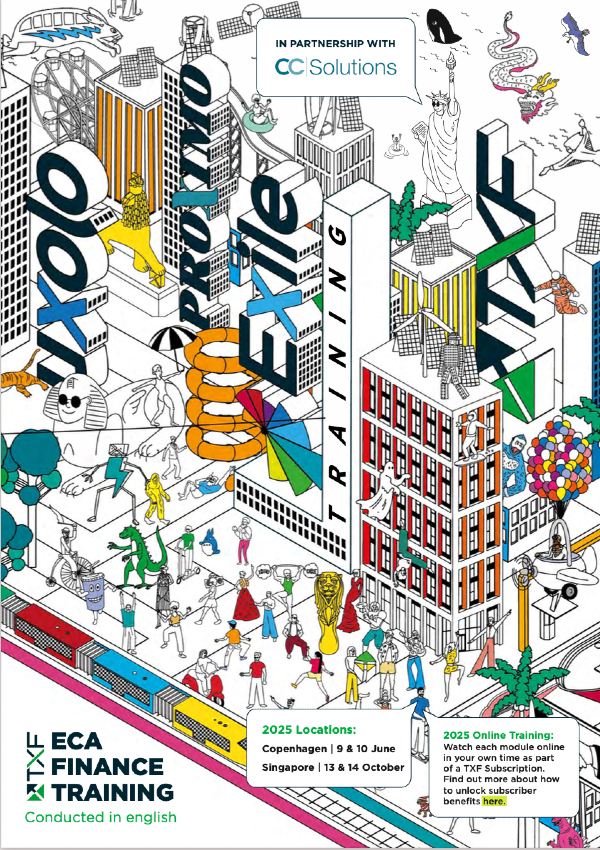Partnering for success
A close look at how bank-fintech partnerships can be advantageous to both banks and fintechs in the evolving, technology-fuelled environment.

Fintech has transformed the world of retail and consumer payments, changing how, where and when transactions can take place. With global investment in fintech soaring, it is only a matter of time before the corporate sector begins to feel its true force.
Matthaeus Sielecki, head of working capital advisory – financial technology, Deutsche Bank, discusses how bank-fintech partnerships can be advantageous to both banks and fintechs in this evolving, technology-fuelled environment – and ultimately enable them to offer enhanced, digital transaction experiences that add significant value to end-users.
Financial technology (fintech) is triggering a monumental shift in the payments space, with the entire financial industry abuzz with anticipation of how new digital capabilities could alter the way in which transactions take place. Change is being driven by a multitude of non-banks entering the payments sphere, leveraging cutting-edge technology to offer solutions that appeal to the digitally-astute customers of today.
While the vast majority of fintech-led change has been in the retail industry – with enhancements to the client experience coming thick-and-fast in terms of multi-channel accessibility, speed and efficiency – many fintech companies are now turning towards the B2B sector, seeking new market opportunities and to transform the corporate payments space. This in turn creates a challenge for traditional banking providers, who must now learn to quickly adapt, despite a number of cultural, infrastructural and regulatory hurdles.
Under these conditions – but also in recognition of the integral role innovative technology is playing in transaction services – banks are increasingly seeking to collaborate with fintech players, to offer attractive solutions that add significant value to client transactions, and safeguard their own position at the hub of the payments business.
Powerful partnerships
Certainly, banks and fintechs have different comparative advantages and weaknesses; factors that need to be identified and combined if they are to deliver technological offerings that meet changing customer expectations. For both parties, a fruitful partnership should liberate them to focus on their core competencies and contribute these areas of expertise to the innovation process.
Fintechs, for example, boast the skills, mindset and regulatory freedom to be more creative, more easily leverage Big Data and be fast and flexible in responding to market needs and changes. Crucially, fintech firms contribute the very latest in technological expertise – from familiarity with and understanding of the language of the internet age, and modern web and smart-device technologies, to algorithm-based data analysis instruments and the interplay between implemented hardware and software.
Furthermore, a fintech company’s relative lack of regulatory restrictions and legacy systems allows it to act as a bridge between bank and market. This also means it can work more closely with customers and merchants to comprehend and respond to the ‘life context’ into which these technologies should fit.
While banks – currently – can only respond with a limited number of traditional payments channels and solutions, the day-to-day customer usage of banking services requires more accessible options. Certainly, fintechs – with their superior technology and technical expertise – are best placed to innovate for these market problems and the practicalities of trade.
In contrast, banks bring an unrivalled level of experience and tried-and-tested infrastructure. Alongside specific financial knowledge – particularly around risk and crisis assessment and management, compliance, local regulatory specifics and treasury needs – banks have the operational power and wherewithal to excel in clearing, settlement, straight-through processing, liquidity and FX functions.
On the regulatory side, as well as being well-positioned to manage the risk of new ventures, banks already have the necessary licences in place.
Working together to innovate
With global interest in fintech gaining serious traction (investment has tripled since 2008 to reach nearly $3 billion, and is poised to grow to $8 billion by 2018), the potential for fintech to bring not only improvements but entirely new concepts to the world of corporate payments is becoming increasingly likely. As such, in order to create the best environment to nurture and launch new technological offerings, banks and fintechs must collaborate rather than compete.
Indeed, collaborating with pioneering firms from the fintech community can enable banks to ‘plug in’ to new ideas and concepts, and be better-positioned to anticipate and implement future tools and techniques, particularly at a time where risk appetites are lower than ever. The post-crisis cultural mindset of risk aversion, coupled with the necessary prioritisation of compliance-related tasks, continues to impact bank investment in innovation and any non-core activities or more creative ‘out-of-the-box’ projects.
This makes bank-fintech partnerships all the more valuable, as they give banks the potential to exploit a ‘sandbox’ approach to experimentation; the freedom to test new ideas away from infrastructural and cultural constraints, and to sidestep internal obstacles to innovation, such as over-familiarity with antiquated payment methods, or the parameters imposed by investment or regulatory pressures.
Similarly, fintechs entering into equal partnerships with traditional banking providers will find it an immediate way to address their lack of payments-market experience or regulatory expertise. Indeed, while nimble and innovative, these new market entrants often lack the necessary global reach, processing infrastructure, financing capabilities and client-knowledge to translate an in-demand market solution into a viable vehicle for long-term growth.
Banks’ on-the-ground market and customer knowledge and pre-existing client base can be of immense value to fintechs as familiarity, reputation and reliability remain key factors for customers. By combining core competencies, co-educating and sharing the burdens of compliance, risk and investment costs, banks and fintechs will leverage synergies and create a stronger proposition that will benefit both parties and – most importantly – benefit their clients, through the delivery of cutting-edge added-value services.
The payments space will undergo significant shifts in this new era of digitalisation, including alterations to business models, customer behaviours and traditional trade and treasury functions. But by combining their strengths and creating synergies, forward-looking fintechs and banks can be at the cutting edge of these changes, and together lead the advance into the digital age.





